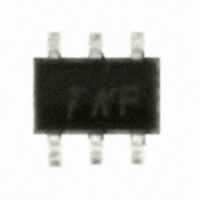HSMS-286K-BLKG Avago Technologies US Inc., HSMS-286K-BLKG Datasheet - Page 7

HSMS-286K-BLKG
Manufacturer Part Number
HSMS-286K-BLKG
Description
DIODE SCHOTTKY DETECT HF SOT-363
Manufacturer
Avago Technologies US Inc.
Datasheet
1.HSMS-2860-BLKG.pdf
(18 pages)
Specifications of HSMS-286K-BLKG
Diode Type
Schottky - 1 Pair Isolated
Voltage - Peak Reverse (max)
4V
Capacitance @ Vr, F
0.25pF @ 0V, 1MHz
Package / Case
SC-70-6, SC-88, SOT-363
Capacitance Ct
0.25pF
Diode Case Style
SOT-363
Pin Configuration
Unconnected Pair
Breakdown Voltage Min
4V
Forward Voltage
350mV
Mounting Type
Surface Mount
Breakdown Voltage
7V
Capacitance
0.3pF
Current Rating
25A
Rohs Compliant
Yes
Diode Configuration
Dual Independent
Forward Current If Max
1mA
No. Of Pins
6
Lead Free Status / RoHS Status
Lead free / RoHS Compliant
Current - Max
-
Power Dissipation (max)
-
Resistance @ If, F
-
Lead Free Status / RoHS Status
Lead free / RoHS Compliant, Lead free / RoHS Compliant
Other names
516-1938
HSMS-286K-BLKG
HSMS-286K-BLKG
The characterization of the surface mount package is
too complex to describe here — linear equivalent circuits
can be found in AN1124.
Detector Circuits (small signal)
When DC bias is available, Schottky diode detector
circuits can be used to create low cost RF and
microwave receivers with a sensitivity of ‑55 dBm to
‑57 dBm.
video impedance of such circuits, they display classic
square law response over a wide range of input power
levels
in the most simple case they appear as shown in Figure
9. This is the basic detector circuit used with the HSMS‑
286x family of diodes.
Output voltage can be virtually doubled and input
impedance (normally very high) can be halved through
the use of the voltage doubler circuit
In the design of such detector circuits, the starting point
is the equivalent circuit of the diode. Of interest in the
design of the video portion of the circuit is the diode’s
video impedance — the other elements of the equiv‑
alent circuit disappear at all reasonable video frequen‑
cies. In general, the lower the diode’s video impedance,
the better the design.
RF
Figure 9. Basic Detector Circuits.
[1]
[2]
[3]
[4]
[5]
7
RF
IN
IN
Avago Application Note 956‑5, Dynamic Range Extension of Schottky
Avago Application Note 986, Square Law and Linear Detection.
Avago Application Note 956‑4, Schottky Diode Voltage Doubler.
Avago Application Note 963, Impedance Matching Techniques for
Avago Application Note 923, Schottky Barrier Diode Video
Detectors.
Detectors.
Mixers and Detectors.
[2,3]
NETWORK
NETWORK
Z-MATCH
Z-MATCH
. These circuits can take a variety of forms, but
[1]
HSMS-285A/6A fig 12
Moreover, since external DC bias sets the
DC BIAS
DC BIAS
L
1
VIDEO
OUT
L
1
VIDEO
OUT
[4]
.
The situation is somewhat more complicated in the
design of the RF impedance matching net work, which
includes the pack age inductance and capacitance
(which can be tuned out), the series resistance, the
junction capacitance and the video resistance. Of the
elements of the diode’s equiv alent circuit, the parasitics
are constants and the video resistance is a function of
the current flowing through the diode.
The sum of saturation current and bias current sets
the detection sensitivity, video resistance and input RF
impedance of the Schottky detector diode. Where bias
current is used, some tradeoff in sensitivity and square
law dynamic range is seen, as shown in Figure 5 and
described in reference
The most difficult part of the design of a detector circuit
is the input impedance matching network. For very
broadband detectors, a shunt 60 Ω resistor will give good
input match, but at the expense of detection sensitivity.
When maximum sensitivity is required over a narrow
band of frequencies, a reactive matching network is
optimum. Such net works can be realized in either lumped
or distributed elements, depending upon frequency,
size constraints and cost limitations, but certain general
design principals exist for all types.
with the RF impedance of the HSMS‑286x series when
bias current is set to 3 µA. See Figure 10.
Figure 10. RF Impedance of the Diode.
0.2
0.6
HSMS-285A/6A fig 13
R
S
R
= R
6
V
= R
1
d
-
j
+ R
0.026
2
I
5
f
S
[3]
.
5
4
3
2
1 GHz
[5]
Design work begins





















